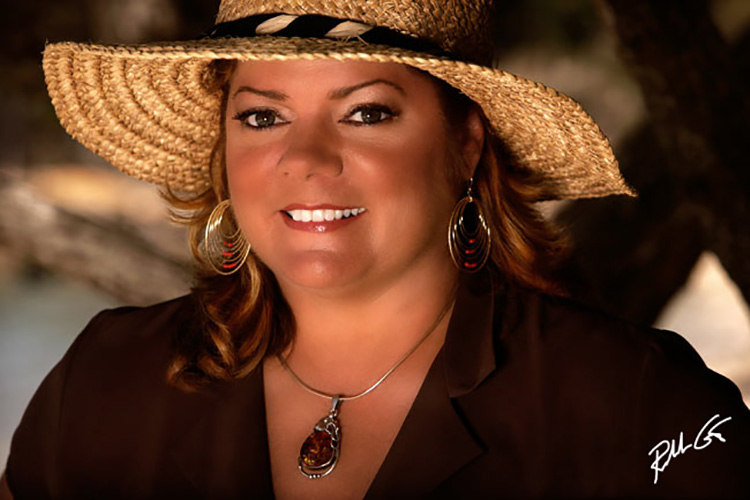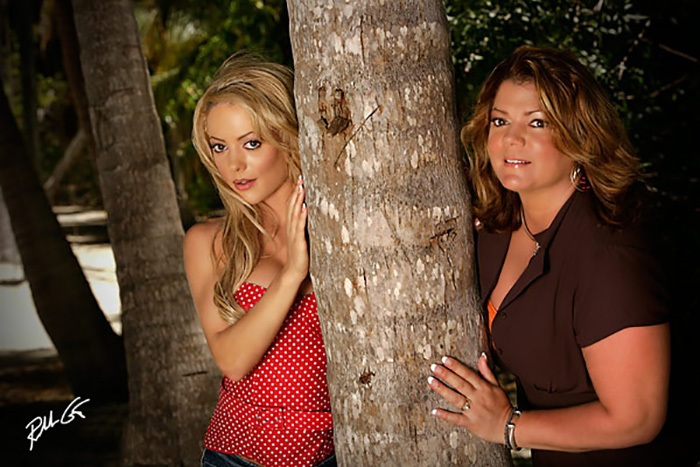Sometimes Digital Cameras Are Just Too Sharp
Often photographers are challenged with photographing a mature, female subject that wants a glamorous photo, usually for their significant other or for their own self-esteem. Unfortunately, with maturity and today’s tack-sharp digital cameras, the evidence of aging, such as wrinkles around the face and eyes, are sometimes emphasized in a more dramatic manner than seen with the human eye. However, there are solutions to help reduce this sharp emphasis of what I term “the good-life” to my more mature female photography clients.

Regardless of your subject’s age, it’s about capturing the inner- and outer-beauty.
First, I select a medium-telephoto to standard telephoto lens, usually in the 85mm to 200mm magnification range for my 35mm DSLR camera. These lenses provide a great comfort distance between my subject and I so they are more relaxed when in front of the camera. Telephoto lenses naturally provide for tight composition when framing the image and help deemphasize any distracting backgrounds through optical compression. This lens compression magnifies the background while placing it slightly out of focus, thus providing a nice separation of the background from the subject. You can read more about this on a previous photography tip here on SunbouncePro.com, The Pots and Pans of Photography.
Second, I adjust my lens aperture to f/4.0 and for slightly younger subjects, to f/5.6 to avoid the “optimum” aperture of the lens. All lenses, regardless of their focal length, have what is called the “sweet spot,” or optimum aperture—the sharpest point of the lens, usually located somewhere between f/8 through f/11 on most lenses. It’s not uncommon for photographers to believe higher aperture values, such as f/16 or f/22, actually provide the sharpest image, though this is not true. These higher, or minimum apertures, provide for more depth of field, which gives a perception of a sharper image.
Third, the most important part of any photograph is the lighting, or the lifeblood of the image, as without light, you have nothing. While some photographers will capitalize on diffused sunlight light from a window, some professional photographers utilized some sort of artificial light source such as an on-camera flash or studio flash. While on-camera flash is more portable and lightweight, it’s also the worst flash to use when photographing a more mature female subject because the flash unit is small and specular, thus creating harsh light that produces more contrast in an image. The last thing a photographer wants are profound facial blemishes through unnecessary image contrast.

Mother and daughter photos work well to illustrate youth and maturity.
Obviously not every photographer owns the more expensive lighting equipment, so if you have to use an on-camera flash, take a small, clear bottle of water, remove the label, then place it in front of the flash so that the water will diffuse the light for a more flattering image. Yes, you can shoot the flash right through the water bottle and if your camera and flash are set on the auto-exposure modes, they should work together to adjust the light output appropriately.
This is where the SUNBOUNCE PRO or MINI photography reflectors come in handy. They are less expensive than studio strobes and even some on-camera flash units, and they reflect “God’s light” which is the most flattering light when reflected or diffused on to a woman’s skin vs. the harsh qualities of flash. And if you must use flash, try pointing it into the SUNBOUNCE photography reflectors as this technique will improve the light quality from your flash better than if shot straight on.
If you own studio lighting equipment, stick with the golden rule, “the larger the light modifier, the sweeter the light.” Basically, use the largest light modifier possible, such as a large soft box or octabox for a more flattering light quality, or again, a SUNBOUNCE PRO. It’s important to keep in mind that the final light quality changes to a softer, sweeter light as you move the light modifier closer to your subject too. As you move the light modifier away from your subject, the light quality increases in harshness and contrast as the light becomes more specular and small in relation to the subject.
Ultimately, we can’t avoid the good-life and the effects of aging that it brings us, especially the crow’s feet most women learn to hate and often ask photographers to hide in their glamorous type portraits. While every subject is different, any photographer will find their photographs will please their clients more by simply choosing the right lens, avoiding the sweet spot of the lens, and finally, understanding their lighting sources, especially with today’s tack-sharp digital cameras.



